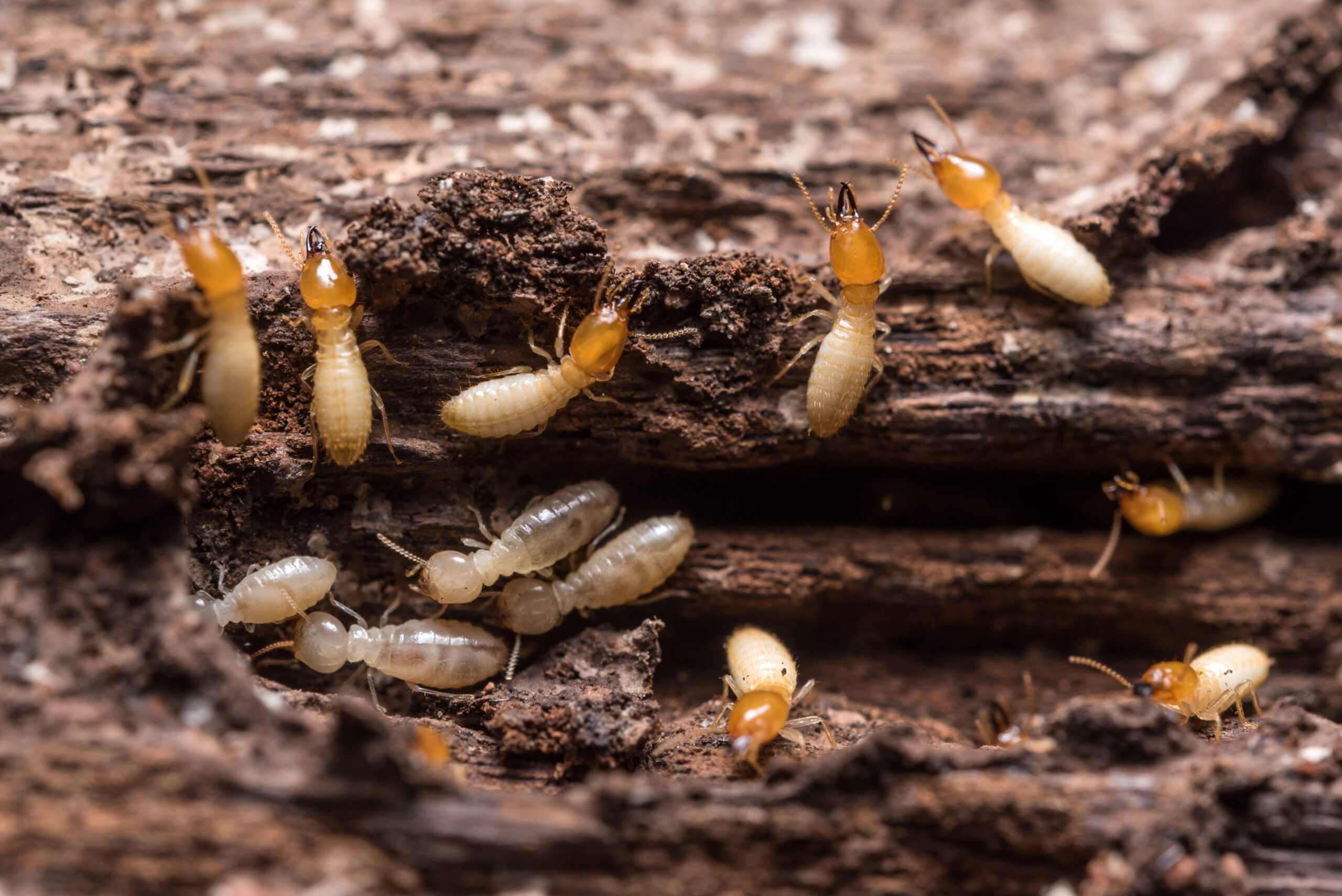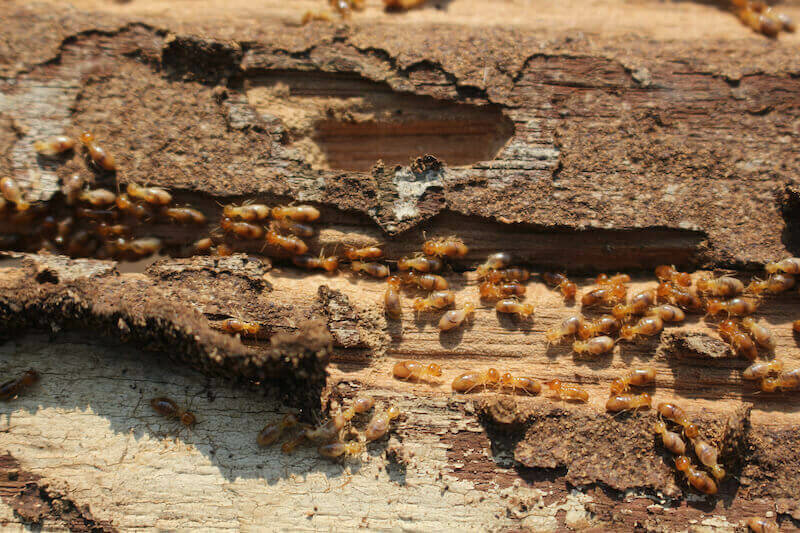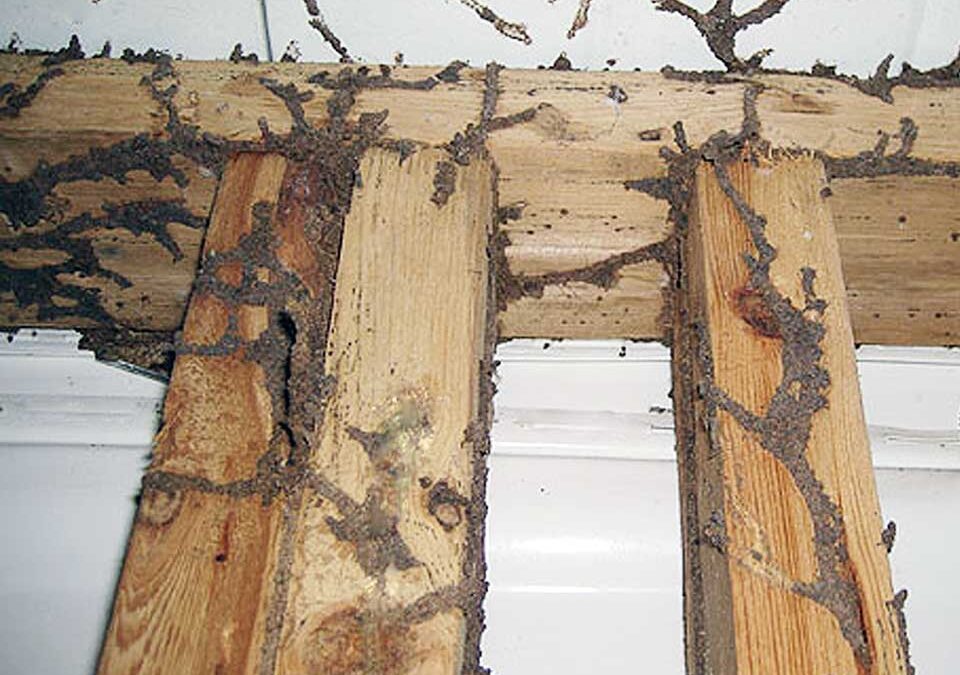Termite Treatments in Florida
Exterminator Services for West Palm Beach, Jupiter, Palm Beach Gardens, North Palm Beach, Loxahatchee, Wellington Palm Beach, Lake Worth, Royal Palm Beach
Florida’s warm climate and year round humidity give termites the perfect conditions to feed on wooden materials. In and around West Palm Beach, as well as in Jupiter, Palm Beach Gardens, North Palm Beach, Loxahatchee, Wellington, Palm Beach, Lake Worth, and Royal Palm Beach, homeowners and businesses risk termite attacks if any structure touches moist soil or if wood stays damp. These insects chew from the inside out, so owners often do not realize there is a problem until wood starts to hollow or wings appear on windowsills. Below, you will learn why termites multiply in Florida, signs that point to a termite infestation, and why contacting a termite exterminator for termite treatments in Florida is the most effective route. You will also gain occupant tips to keep new colonies from emerging once the current nest is removed.
Why Termites Thrive in Florida
- Warm Temperatures
Florida avoids the extended cold that might slow termite activity in other areas. This allows termites to feed and breed consistently, rarely entering dormancy. - High Humidity
Certain termite species need damp conditions to maintain their nests. Damp soil near foundations or indoor moisture leaks let them settle and expand. - Wooden Structures
Fences, decks, or framing that remain in contact with soil make it simpler for subterranean termites to move from the ground into these items. If the wood is untreated or moist, they quickly establish a colony. - Movement of Goods
Some drywood termites arrive through infested furniture or stored wood. Even a minor gap in a wall can let swarmers slip in and form a new nest.

How to Know You Have Termites
- Mud Tubes
Subterranean termites build small soil tunnels on foundations or walls to protect themselves from dryness and predators while searching for wood. - Discarded Wings
When winged termites mate and find a nesting spot, they shed clear wings. Small piles of these on windowsills or floors often indicate nearby termite presence. - Frass or Pellet Droppings
Drywood termites leave tiny, sand-like pellets known as frass. Seeing little piles near windows, furniture, or flooring signals active feeding in hidden spaces. - Hollow or Damaged Wood
Tapping on beams, floors, or frames that sound hollow might mean termites have eaten the interior. Sometimes paint blisters or walls bulge if termites tunnel close to surfaces. - Swarming Termites
During certain seasons, reproductive termites fly to form new colonies. If you spot groups of flying termites, quick attention can avert a bigger infestation.
Why Quick Action is Key
- Escalating Damage
Termites feed mostly unseen, so small problems can expand rapidly, eventually requiring costly structural repairs. - Possible Health Concerns
Though termites are not known for spreading diseases, a weakening building poses safety issues if supports are affected. - Business and Rental Risks
Commercial or rental properties with active termites risk halting operations for repairs or losing occupants if inspections reveal structural harm. - Greater Expenses Over Time
Delays in treating small infestations let them grow. Early elimination usually reduces both stress and financial strain.

Why a Termite Exterminator Helps
Store bought sprays or random fixes generally target only visible termites. Colonies living in soil or deep inside wood remain unaffected, allowing the nest to continue growing. A termite exterminator identifies the correct approach for each termite type, such as creating a soil barrier, installing bait stations for subterranean nests, or using fumigation if drywood termites occupy multiple beams. This professional approach ensures eggs and adult termites are destroyed. Occupants also learn how to reduce dampness or seal wood to soil contact, making the area less inviting for future termites.
Our Termite Treatments in Florida
- Inspection
We start by looking at exterior foundations or fences that meet soil directly, as well as interiors for dropped wings, pellet droppings, or hollow sounding wood. Recognizing whether subterranean or drywood termites are involved drives the treatment. - Customized Solutions
We may trench soil around foundations and apply termiticides, place bait stations that worker termites bring to the nest, or use tent fumigation if drywood activity is widespread. Spot treatments can suffice if infestations are localized. - Safety and Precision
Some solutions, like soil barriers or bait stations, let occupants stay home. Full structure fumigation typically requires a short absence. We detail each step so owners feel confident. - Follow Up
Termites may attempt reentry if conditions stay favorable. Scheduling periodic checks confirms no new mud tubes or swarmers appear. Occupant steps like storing wood away from walls and fixing leaks help.
West Palm Beach Region
Jupiter, Palm Beach Gardens, North Palm Beach, Loxahatchee, Wellington Palm Beach, Lake Worth, Royal Palm Beach
These communities experience warm and humid conditions that favor termite growth. Wooden items touching damp soil or leaky structures can attract subterranean species. Drywood termites can enter attics or furniture. We begin with a comprehensive inspection, propose solutions like bait stations or spot treatments for small drywood colonies, or fumigation for bigger spread. After eliminating the nest, owners are encouraged to address moisture issues, keep wood from direct soil contact, and watch for new swarmers each season.

Tips for Long Term Termite Control
- Elevate Wood off Soil
Raise fence posts and deck beams with concrete footers. Keep firewood or scrap lumber a short distance from the house and not on bare ground. - Fix Moisture Leaks
Whether it is a leaky pipe under sinks or a dripping air conditioner line, removing excessive moisture dries out termite attractions. - Seal Cracks and Gaps
Drywood termites enter through small openings in siding, roof joints, or windows. Using caulk or weatherstripping decreases easy access points. - Store Wood Properly
Avoid stacking logs or wooden materials against outside walls. Damp wood lying on soil is an open invitation to subterranean termites. - Schedule Annual Checks
Professional inspections once or twice yearly can spot early mud tubes, frass, or swarmers, minimizing damage if detected sooner.
Contact Us for Reliable Solutions
If you find mud tubes along your foundation, see discarded wings near windows, or notice suspicious pellet droppings, do not delay an inspection. Contact us to learn more or schedule your service. Our termite treatments in Florida blend in depth property checks, using baits or soil barriers for subterranean infestations, or fumigation or spot injections for drywood nests. By eliminating the current colony and advising occupant steps like drying moisture areas and separating soil from wood, we protect homes and businesses in West Palm Beach, Jupiter, Palm Beach Gardens, North Palm Beach, Loxahatchee, Wellington Palm Beach, Lake Worth, and Royal Palm Beach. This integrated approach ensures a stable, termite free environment without lengthy disruptions.
